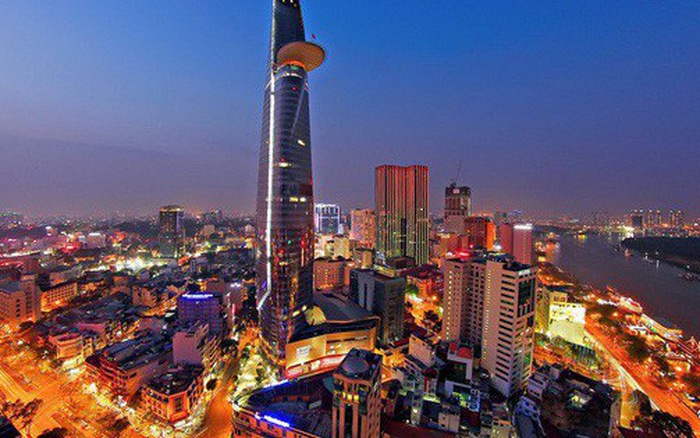Vietnam has made major inroads over the past years to swift from peripheral to mainstream industrial nation which, in terms of investment, is at the center of attention.

(Illustrative photo)
The country has experienced a long way before it becomes one of the region's investment hubs for foreign investors thanks to intensified investment in infrastructure.
Real estate market – backbone of the economy
Long-term investment in infrastructure has led to the development of real estate market. Accordingly, available and functional real estate has become the backbone for emerging industrial economy.
In Vietnam, this scenario will be no different, and will rely heavily on the favorable fundamentals of the property space, according to a report by CBRE.
Going forward, infrastructure connectivity will play a larger role in the occupiers’ location decisions. That leads to an increasing number of industrial parks nationwide with occupancy rates of between 70% and 90%.
In a recent CBRE survey, the number of factories in Vietnam named in Apple’s supplier list increased from 16 in 2015 to 22 in 2018, all of which are foreign invested enterprises (FIEs).
Following the same trend, 29 Vietnamese companies are now Samsung’s tier-1 supplier. This number is poised to increase after Samsung Electronics Co., Ltd announced last year it would cease operations of mobile phone production plant in China.
As a result, Samsung's localization rate jumped from 34% of total product value in 2014 to 57% in 2017.
CBRE predicted an increase in industrial property supply across Vietnam for the remainder of 2019 and the full 2020 to benefit from this production shifting from China.
In addition, the thriving of new industrial parks, manufacturing facilities, and infrastructure shows that Vietnam will enter the next decade in a prime position and further establish itself as one of the major beneficiaries of a rebalancing China and evolving global supply chain.
Cost advantage
Production cost remains one of the competitive edges that Vietnam has in comparison with its giant neighboring China. Indeed, industrial land costs in major cities across China reach around US$180 per square meter (sq.m) while the rates in Vietnam are between US$100 and US$140/sq.m. This is clearly attractive for prospective manufacturers.
Meanwhile, the average land rental in Vietnam is increasing 5% to 8% annually, reflecting modest rise in rental at industrial parks, especially those connected to strategic locations and in close proximity to key infrastructure.
The average ready built factory (RBF) and warehouse rental in Ho Chi Minh City, for example, is around US$4.1/sq.m/month. The highest price currently reaches US$8/sq.m/month for a new RBF campus for to Japanese clients in the city.
In the northern region, the average RBF rentals are among US$3.5-US$4/sq.m/month. The highest rate in North Vietnam ranges from US$5.5 to US$6/sq.m/month for options in established industrial parks in Hanoi, Bac Ninh, Hai Duong, and Hai Phong.
Reasons behind mainstream industrial nation
Economically and politically, Vietnam has participated in more global forums and engaged in different events of the region and the world.
In addition, it has signed dozens of trade pacts that enable the country to have significant advantages in terms of trade and investment, drawing more foreign investors.
Five trade deals have been inked within ASEAN, six have been signed between ASEAN and its partners including China, South Korea, Japan, India, Australia, and New Zealand, and four other bilateral free trade deals.
Over the last years, the country’s high GDP growth, stable inflation, and better business environment have become key drivers to Vietnam’s competitive position, attracting more foreign direct investment (FDI).
The government continues to make heavy investments into infrastructure. According to Asian Development Bank (ADB) projections, Vietnam outpaces every Asian country, except China, in the ratio of spending on infrastructure out of GDP.
Another reason is the shifting of locations and capital inflows from China: China’s ongoing move towards a higher income nation and the deepening ties of Vietnam into global supply chains have acted as major factors to lift Vietnam up in the global map of investment hubs.
China’s role in the global economy is maturing as manufacturing focuses inwards and the country becomes more service-based and less relying on exports. In addition, the trade dispute with the US is speeding up this transition.
Vietnam is poised to be a key beneficiary and to become an even bigger winner from this rotation in China thanks to its lower labor costs and more affordable land costs, less restrictive trade barriers, straight forward access to new supply chains, improved infrastructure, and more industrial policy support, among others.
Geographic position, Vietnam provides more values to global multisectoral companies than major ASEAN peers including Indonesia and the Philippines thanks to convenient connectivity to all parts of the world via air, sea, road transportation. The country is home to an extensive network of national highways, world-class ports, and better equipped airports.

















